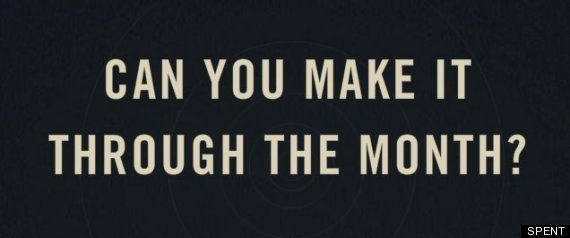
If you were a jobless parent, could you survive on $1000?
(Thanks Pete!)

If you were a jobless parent, could you survive on $1000?
(Thanks Pete!)
[youtube=http://www.youtube.com/watch?v=e-hlP8Ql384&feature=player_embedded]
Do regional boundaries defined by governments respect the more natural ways that people interact across space? This paper proposes a novel, fine-grained approach to regional delineation, based on analyzing networks of billions of individual human transactions. Given a geographical area and some measure of the strength of links between its inhabitants, we show how to partition the area into smaller, non-overlapping regions while minimizing the disruption to each person’s links. We tested our method on the largest non-Internet human network, inferred from a large telecommunications database in Great Britain. Our partitioning algorithm yields geographically cohesive regions that correspond remarkably well with administrative regions, while unveiling unexpected spatial structures that had previously only been hypothesized in the literature. We also quantify the effects of partitioning, showing for instance that the effects of a possible secession of Wales from Great Britain would be twice as disruptive for the human network than that of Scotland.
Carlo Ratti, Stanislav Sobolevsky, Francesco Calabrese, Clio Andris, Jonathan Reades, Mauro Martino, Rob Claxton, Steven H Strogatz – PLoS ONE, 2010
Also:
http://www.pnas.org/content/107/52/22436
We investigate the extent to which social ties between people can be inferred from co-occurrence in time and space: Given that two people have been in approximately the same geographic locale at approximately the same time, on multiple occasions, how likely are they to know each other? Furthermore, how does this likelihood depend on the spatial and temporal proximity of the co-occurrences? Such issues arise in data originating in both online and offline domains as well as settings that capture interfaces between online and offline behavior. Here we develop a framework for quantifying the answers to such questions, and we apply this framework to publicly available data from a social media site, finding that even a very small number of co-occurrences can result in a high empirical likelihood of a social tie. Our analysis uses data in which individuals engage in activities at known places and times. There are many potential sources of such data, including transaction records from cell phones, public transit systems, and credit-card providers. We use a source where analogous activities are recorded publicly and online: a large-scale dataset from the popular photo-sharing site Flickr. Most photos uploaded to Flickr include the time at which the photo was taken, as reported by a clock in the digital camera, and many photos are also geo-tagged with a latitude–longitude coordinate indicating where on Earth the photograph was taken. These geo-tags either are specified by the photographer by clicking on a map in the Flickr web site, or (increasingly) are produced by a global positioning system (GPS) receiver in the camera or cell phone. Flickr also contains a public social network, in which users specify social ties to other users.